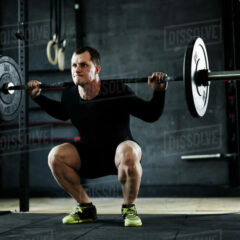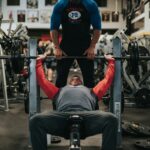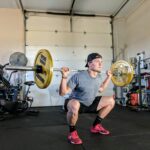https://weightliftingforpower.com/what-are-the-best-exercises-for-strength-training/
The Best Exercises For Strength Training
The best strength training exercises can be advantageous, but focusing on mastering the fundamentals is vital to ensure lasting success. In its simplest form, strength training involves exercises that improve muscle strength by making your muscles work against a weight or force. It’s not just about bulking up. It’s about building endurance, increasing bone density, and boosting mood.
At the core of strength training are a few golden rules. You’ve got overload, which means challenging your muscles with more weight or resistance than they’re used to. No sitting in the comfort zone if you want to see real progress. Then there’s specificity. You focus on specific muscle groups depending on your desired outcomes, whether building more muscular legs or enhancing the strength of your upper body. Progression is another key principle; this is about steadily upping the challenge to keep those gains coming.
What gear do you need? Think dumbbells, barbells, and some resistance bands. These might sound basic, but they’re incredibly versatile. Don’t be too quick to dismiss them in favor of fancy machines. With these tools, you can tackle everything from simple curls to complex compound lifts.
Let’s clear up a common myth: lifting weights doesn’t automatically turn you into a muscle-bound giant overnight. Consistency is your friend here. Stick with a routine, and you’ll gradually see changes, from improved muscle tone to better posture.
Now, onto some misconceptions. One common one is that strength training is just for young folks or those looking to beef up. Reality check: it’s beneficial at any age and fitness level. It enhances daily activities, fosters healthy aging, and benefits everyone, not just bodybuilders.
Top Exercises for Building Full-Body Strength
A handful of exercises stand out as game-changers when building full-body strength. The deadlift is a powerhouse move that targets the back, glutes, and hamstrings. It’s one of those all-in-one exercises that offers incredible bang for your buck. By engaging multiple muscle groups, you’re building strength and improving your posture and lifting efficiency. You can switch it up to target specific muscles with variations like the sumo or Romanian deadlift.
Squats are another essential part of your strength training toolkit. They work wonders on your legs and core. The key is variation—try front or box squats to keep things interesting and your muscles guessing. They’re not just for leg day but crucial for improving mobility and overall coordination.
Then there’s the bench press, which hones in on the chest, triceps, and shoulders. Mastering this move can significantly boost your upper body strength. Focus on your form to maximize gains and avoid injuries. You can use grips, inclines, or decline benches to hit different muscle angles.
Mastering pull-ups can be immensely satisfying for those looking for a test of absolute strength. These are like the ultimate test of body strength and control. They target the back and biceps. If you’re new to pull-ups, starting with assisted ones or using resistance bands can help you get there.
Lastly, the overhead press is indispensable for building shoulder stability and strength. It’s also great for your core, engaging various muscles to keep your form solid. Try seated or standing versions to vary the difficulty and muscle emphasis. Remember, consistent practice and attention to technique can lead to impressive gains over time.
Designing a Balanced Strength Training Routine
Creating a solid strength training routine means understanding your goals first. Are you aiming for mass, endurance, or just overall fitness? Knowing this helps tailor your exercises and approach so you’re not just lifting for the sake of it.
When structuring your routine, consider incorporating both compound and isolation exercises. Exercises that target several muscle groups simultaneously, like squats and bench presses, can boost your workout efficiency, enabling you to achieve more significant results in a shorter period. In contrast, isolation exercises target a specific muscle group—perfect for focusing on the areas you want to improve.
Rest and recovery are essential pieces of the puzzle. While it’s easy to feel the urge to hit the weights, remember that allowing your muscles time to rest and recover is crucial for their growth and strength. Aim for at least one rest day between heavy workouts for the same muscle group.
A typical week might look like this: start with a push day focusing on your chest and triceps, follow up with a pull day for your back and biceps, and then a dedicated leg day. This split ensures you’re targeting all major muscle groups while allowing for rest and adaptation.
Let’s not forget nutrition. It can make or break your gains. Maximize your results by fueling your body with protein-rich foods that support muscle repair and growth. Watch your carbohydrates to balance energy and recovery, and don’t skimp on the essential fats—they’re crucial for overall health and performance.
Staying Safe and Avoiding Injuries During Strength Training
Safety should always come first in strength training. Proper form isn’t just a nice-to-have; it’s a must to avoid injuries. Watching tutorial videos or working with a trainer can help you nail down techniques, especially for complex moves like deadlifts or squats.
Pay attention to any signs of overtraining. Fatigue, persistent muscle soreness, and a drop in performance can be red flags. Your body’s way of saying, ‘Take a break,’ and ignoring these can lead to injuries. Listening to your body isn’t a sign of weakness but one of strength.
Warming up before diving into heavy lifting is crucial. A good warm-up preps your muscles increases your heart rate and ensures your joints are ready for action. Similarly, cooling down helps gradually return your heart rate to normal and can aid muscle recovery.
Wearing the right gear can offer additional support and protection. Shoes with proper arch support, gloves for grip, or a weight belt for heavy lifts contribute to safety and performance.
Being mindful of your limitations and gradually increasing your weight can prevent unnecessary strain. Adjust your routine, whether shortening a session or lowering weights if something feels off. Remember, you’d rather train well over the long haul than push too hard and get sidelined.
https://youtu.be/tj0o8aH9vJw?si=bSfA0rf4aGQiY934
https://www.wealthyaffiliate.com?a_aid=352a86b2
https://weightliftingforpower.com/medicine-ball-exercises-for-strength/
https://weightliftingforpower.com/bodybuilding-exercises-for-strength/
https://weightliftingforpower.com/the-best-cardio-exercises-for-bad-



